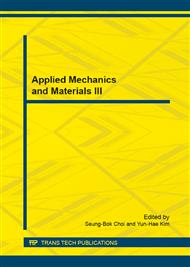[1]
Guangxiang Yang, Ardianto Notodirdjo, Attached self-lifting scaffolds synchronous movements measuring method and device based on transmitted light of optoelectronic, J. Measurement. 44(2011) 1564-1571.
DOI: 10.1016/j.measurement.2011.06.009
Google Scholar
[2]
Hao Zhang, Kim J. R. Rasmussen, Bruce R. Ellingwood, Reliability assessment of steel scaffold shoring structures for concrete formwork, J. Engineering Structures . 36(2012) 81-89.
DOI: 10.1016/j.engstruct.2011.11.027
Google Scholar
[3]
Hongbo Liu, Qiuhong Zhao, Xiaodun Wang, et al, Experimental and analytical studies on the stability of structural steel tube and coupler scaffolds without X-bracing, J. Engineering Structures. 32(2010) 1003-1015.
DOI: 10.1016/j.engstruct.2009.12.027
Google Scholar
[4]
A.S. Yassin, J.F. Martonik, The effeciveness of the revised scaffold safety standard in the construction industry, J. Safety Science. 42(2004): 921-931.
DOI: 10.1016/j.ssci.2004.05.001
Google Scholar
[5]
Ministry of Housing and Urban-rural Development of RPC, Safety and Technology Code of Tool's Scaffold Attached to the Structure in Construction (JGJ202-2010), (2010).
Google Scholar
[6]
Juilin Peng, Chungwei Wu, Siulai Chan et al, Experimental and numerical studies of practical system scaffolds, J. Journal of Constructional Steel Research. 91(2013) 64-75.
DOI: 10.1016/j.jcsr.2013.07.028
Google Scholar
[7]
H. Zhang, T. Chandragsu, K. J. R. Rasmussen, Probabilistic study of the strength of steel scaffold systems, J. Structural Safety. 32(2010) 393-401.
DOI: 10.1016/j.strusafe.2010.02.005
Google Scholar
[8]
Yongrui Chen, Laijun Liu, Yongcan Duan, Study on the mechanical characteristic and safety measures of bowl-scaffold, J. 13th COTA International Conference of Transportation Professionals (CICTP 2013).
Google Scholar
[9]
W.K. Yu, K.F. Chung, S.L. Chan, Structural instability of multi-storey door-type modular steel scaffolds , J. Engineering Structures. 26(2004) 867-881.
DOI: 10.1016/j.engstruct.2004.02.006
Google Scholar
[10]
Juilin Peng, Kuan-Hung Chen, Siu_lai Chan, et al, Experimental and analytical studies on steel scaffolds under eccentric loads, J. Journal of Constructional Steel Research. 65(2009): 422-435.
DOI: 10.1016/j.jcsr.2008.03.024
Google Scholar


